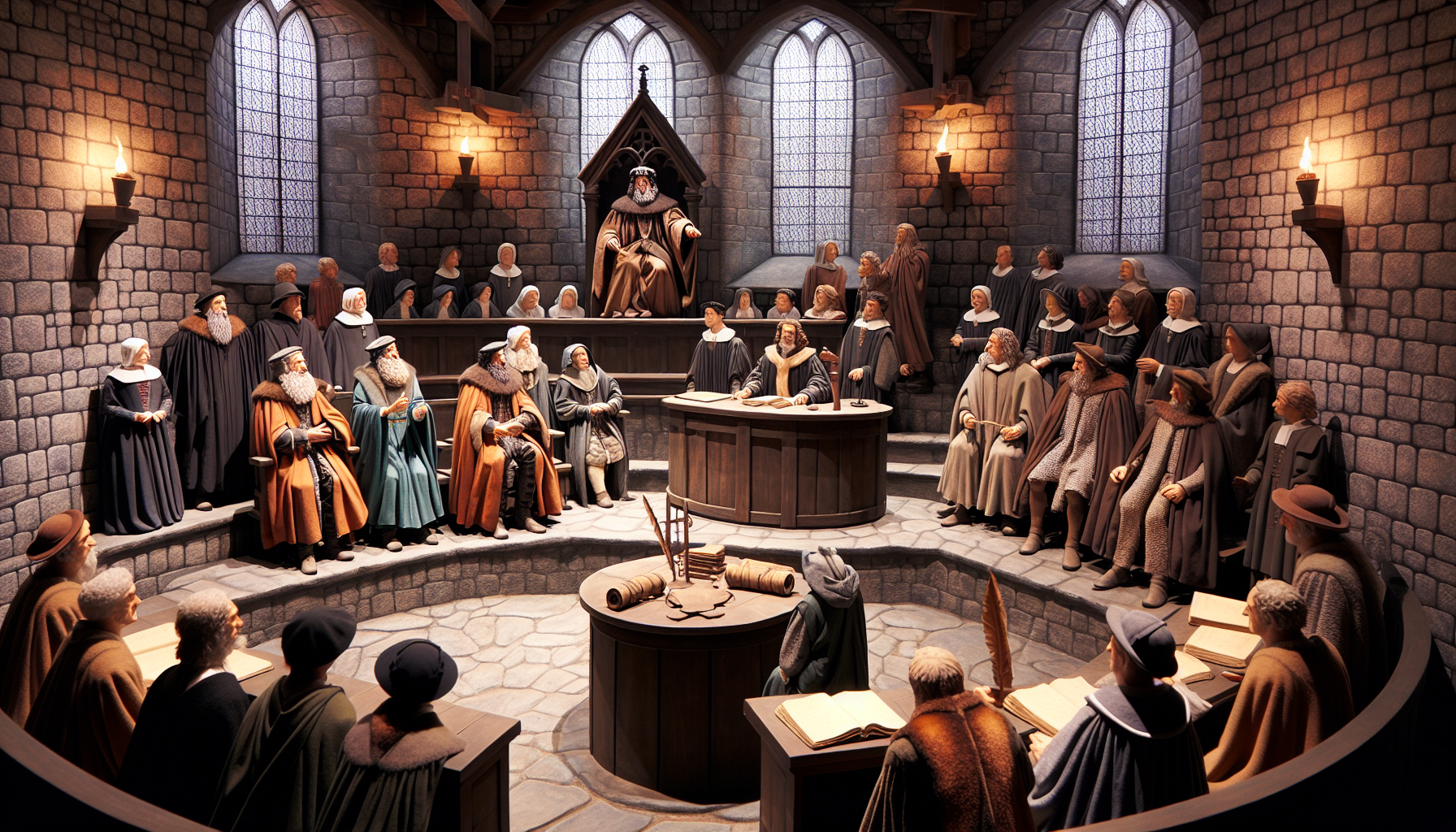Short Answer:
Common law, rooted in medieval England, relies on judicial decisions for adaptability and consistency in legal matters like property and human rights. Its flexibility caters to evolving norms and technology, ensuring government accountability. It differs from civil laws focus on statutes.
Key Takeaways
- Common law is based on judicial decisions and precedent, providing flexibility while also allowing for the evolution of law.
- Judicial precedent serves as the cornerstone of common law, providing a basis for consistent outcomes with deviations when necessary.
- Common Law systems have been adopted in many countries worldwide and offer protection to property rights, human rights, contractual relationships and intellectual property such as trademarks & creative works.
Exploring the Essence of Common Law Rights

Common law is a unique legal system developed by judges and quasi-judicial tribunals through written opinions. Unlike other legal systems that rely on explicit statutes or codes, the common law system is based on judicial decisions and precedent, which have a significant influence in shaping the law. It’s these precedents, or past decisions, that are used as standards for future cases, ensuring a level of predictability and uniformity in legal rulings.
This system, known for its flexibility and adaptability, is particularly beneficial when dealing with complex and evolving societal issues. Some key features of the common law system include:
- Reliance on judicial decisions and precedent
- Flexibility and adaptability to changing circumstances
- Emphasis on fairness and justice
- Development of legal principles through case law
Overall, the common law system plays a crucial role in maintaining stability and consistency in common law legal systems while also allowing for the evolution of the law to meet the needs of society.
While common law primarily stems from precedents established in previous rulings, it does not impose obligations on governments to actively advocate for and safeguard human rights, unlike human rights treaties. This characteristic is particularly true for common law countries. The recognition of rights in common law is a testament to the principle that law is always evolving, and it’s this adaptability that has allowed common law to remain relevant over centuries.
The Origin and Evolution of Common Law
A journey back to medieval England, the birthplace of common law, aids in understanding the essence of common law rights. The roots of common law can be traced back to the customs and practices of the English kings following the Norman Conquest in 1066. The common law evolved significantly during the 12th and 13th centuries, influenced by the development of legal institutions and the integration of Roman law during the Bologna revival. This evolution of english common law led to the distinction between common law and civil law traditions.
The British Empire had a profound impact on the spread of common law. As the empire expanded, it disseminated the English legal system to its colonies. Many of these former British colonies, such as the United States and Australia, continue to uphold the common law system to this day. This widespread adoption attests to the enduring influence and adaptability of the common law system.
Judicial Precedent as the Cornerstone
Judicial precedent serves as the bedrock of common law. It’s rooted in the principle of stare decisis, which compels cases to be adjudicated based on consistent principles to ensure similar outcomes. By examining past decisions and consolidating the legal principles of previous cases, courts create a corpus of case law. When faced with similar disputes, courts are generally obligated to adhere to the reasoning employed in the prior decision.
However, there are circumstances where lower courts can deviate from established precedents. For example, a lower court may choose to overturn or modify a precedent if:
- The precedent is considered obsolete
- The present case significantly differs from the precedent case
- Legislative statutes are either absent or open to interpretation
Notably, judges play a pivotal role when a dispute significantly deviates from previous cases and when legislative statutes are either absent or open to interpretation.
The Role of Case Law in Shaping Legal Systems
Case law, with the doctrine of stare decisis at its core, significantly shapes legal systems. This doctrine mandates courts to follow prior legal decisions and rulings, thus ensuring uniformity and steadiness in the legal system. It offers guidance and precedent for understanding and applying the law. Interpretations of statutes in court decisions become authoritative, serving as a reference for future cases.
Significant legal cases have a profound impact on the development of legal systems. Cases like Brown v. Board of Education, Roe v. Wade, and Marbury v. Madison have influenced the development of legal systems and the protection of individual rights. In some instances, case law has even led to new legislation, such as the recognition of upskirting as a crime.
Distinguishing Between Common Law and Civil Law Systems

Although both common law and civil law are integral to many legal systems, they bear distinct characteristics. Common Law systems rely on judicial decisions and precedent to shape the law, whereas Civil Law systems rely on comprehensive codified statutes and laws influenced by Roman legal principles.
Civil Law systems, which have their roots in Roman law, are characterized by:
- The thorough codification of statutes, including constitutional law, which act as the principal basis of law
- Specific provisions including the preservation of ‘financial equilibrium’ for operators
- Force majeure clauses for uncontrollable events
- The influence of administrative law in the enforcement of public-private partnership arrangements.
Codification vs. Case-Based Law
Codification involves the formal process of establishing rights or rules within a systematic code, while case-based law develops organically through the aggregation of court decisions over time. These differences are pivotal in understanding the distinction between civil and common law systems.
In the realm of law, codification involves the intentional formulation of laws through legislative processes and judicial opinions, whereas case-based law develops organically through the accumulation of court decisions and the establishment of legal precedents.
The Interplay of Statutory Framework and Judicial Decisions
The interplay between statutory frameworks and judicial decisions forms a key aspect of both common law and civil law systems. In common law systems, statutory frameworks provide clear legislative intent and rules, and can even supersede or alter common law principles and precedents.
In contrast, within civil law systems, statutory laws serve as the primary source of law and provide a detailed framework. The “judge-made” laws decisions interpret and apply these statutory laws to specific cases, helping to clarify and develop their application in practice.
The Influence of Roman Law on Civil Jurisdictions
Civil jurisdictions have been profoundly impacted by Roman law. It played a significant role in shaping legal systems and establishing the groundwork for the general principles, and concepts that currently govern civil law jurisdictions. The main Roman legal principles incorporated in civil law jurisdictions consist of ‘good faith’, ‘obligational relationship’, and ‘liability’, which were established and refined by the Romans and remain essential elements of these legal systems.
The application of Roman law concepts varies among civil jurisdictions, depending on their individual legal systems.
The Reach of Federal Common Law
Federal common law involves the federal courts’ adoption of legally binding rules to govern issues not explicitly addressed by constitutional or statutory provisions. It’s important to note that there is a distinction between federal common law and state common law. Federal common law is rooted in past judicial opinions at the federal level, while state common law is derived from state-level judicial opinions.
Federal common law is applicable to matters not explicitly covered by federal statutes, whereas state common law pertains to cases not explicitly addressed by state statutes.
Federal Courts and State Authority
The role of federal courts in influencing federal common law is to interpret and apply federal statutes and regulations, and to develop legal principles in areas where Congress has not provided clear guidance. Federal courts are responsible for interpreting and applying federal laws, while state courts handle state laws, ensuring the integrity of both legal systems.
Additionally, federal court precedents have the potential to affect the interpretation of common law in state courts, especially when dealing with the same court.
Notable Cases of Federal Common Law Application
There are numerous notable cases involving the application of federal common law, including those related to:
- maritime law
- international law
- federal contracts
- federal tort claims
- specific areas acknowledged by the Supreme Court
Cases like Erie Railroad Co. v. Tompkins and Clearfield Doctrine have had significant impact on the application of federal common law.
The Bivens v. Six Unknown Named Agents case, for example, established a federal common law right for citizens to seek redress in higher courts for constitutional violations committed by federal agents.
Common Law Principles in Action
In various legal contexts such as property rights, human rights, and contractual relationships, common law principles play an indispensable role. These principles reflect the perspective that the rights of persons and property owners merit protection and that they form the basis for addressing disputes arising from contracts.
Common law impacts human rights in the following ways:
- It functions as a means of safeguarding and acknowledging rights and freedoms.
- It provides a framework for interpreting and applying legal principles.
- It can be used to support arguments in public interest cases.
Property and Contractual Relationships
Common law principles governing property rights play a key role in protecting property owners’ rights and in developing legal principles through judicial rulings. In the realm of contracts, common law is instrumental in establishing a legal framework for addressing disputes that arise from contracts, encompassing principles such as offer and acceptance, consideration, and the interpretation of contractual terms.
When cases are not explicitly governed by specific written rules of law, court rulings are guided by common law principles in deciding the outcomes.
Human Rights and Public Interest

Common law plays a significant role in protecting human rights and public interest. It functions as a means of safeguarding and acknowledging rights and freedoms, assessing the dedication of courts to uphold human rights, and can be used to protect individual liberties. The extent to which the concept of personal liberty covers other related rights and freedoms under the ICCPR is not entirely clear, indicating a potential need for further interpretation.
However, freedom of association is acknowledged within common law, although the status of specific rights, such as those pertaining to trade union activity, is less definitive.
Remedies and Compensation Under Common Law

Common law offers a range of remedies to address legal wrongs, including:
- Compensatory damages
- Specific performance
- Injunctions
- Rescission
- Liquidated damages
- Nominal damages
Compensation in common law courts is determined by considering the extent of the harm, financial losses incurred, and other relevant circumstances.
The principle of restitution in common law is intended to offer recompense by means of gain-based remedies for unjust enrichment. Compensatory damages and punitive damages serve different purposes in common law. While compensatory damages are intended to address the actual losses experienced by the injured party, punitive damages are specifically intended to penalize the defendant for their wrongful behavior.
The Impact of Common Law on Government and Society
By establishing a structure for legal principles and precedents, common law impacts the rule of law in society. It ensures uniformity and equity in law enforcement, fostering the rule of law in society.
Common law also supports the adjustment to technological advancements by permitting ongoing adaptation of its principles to new facts and circumstances. As societies undergo changes and new norms emerge, common law courts interpret and apply the common law principle in the context of these changes.
Government Accountability and the Rule of Law
The common law tradition guarantees government accountability through a system of separated powers, in which the judiciary plays a crucial role in overseeing government actions. The rule of law holds great significance in the common law system as it mandates all individuals and institutions, including the government, to adhere to the law.
Measures are in place to protect individual rights by subjecting the government to the Constitution and limiting its ability to alter or negate common law rights.
Adapting to Technological and Social Changes
Common law has shown remarkable adaptability in light of evolving social norms. Changes in social norms frequently result in modifications in common law, as evidenced by the recognition of same-sex marriages and the handling of sexual harassment legislation in response to the #MeToo movement. The #MeToo movement resulted in the implementation of laws aimed at addressing workplace sexual harassment, such as mandatory training and a relaxation of the criteria for filing lawsuits in state courts.
Common law has also adapted to accommodate the legalization of same-sex marriage in common law jurisdictions by acknowledging the eligibility of same-sex couples for common law marriage.
Common Law Rights in Specific Contexts
The legal framework for employment and labor law is significantly impacted by common law. It delineates important elements of the employment relationship, including the concept of at-will employment and the related rights and responsibilities.
Common law rights also offer protection for individuals in the criminal justice system by means of the Rules of Criminal Procedure, which were enacted to ensure that the accused are safeguarded and that their rights are respected during criminal proceedings.
Employment and Labor Law
Significant common law cases have influenced the development of employment and labor law, establishing a legal framework for contractual relationship that governs the rights and responsibilities of the parties involved. One of the key common law concepts reflected in the employer-employee relationship is the ‘Duty of Care’. This concept establishes a legal obligation for employers to:
- Protect employees from foreseeable harm or risks at work
- Provide a safe and healthy work environment
- Take reasonable steps to prevent accidents and injuries
- Provide training and supervision to ensure employee safety
By understanding and adhering to the Duty of Care, employers can create a safe and productive work environment for their employees.
Employees also possess common law rights against wrongful dismissal, which offer legal redress such as damages or reinstatement.
Criminal Law and Punishment
Common law plays a significant role in criminal law and punishment. It serves as the basis for legal principles and precedents that shape the interpretation and implementation of criminal laws, thereby establishing uniform standards and preserving fairness within the criminal justice system. Notable cases such as those related to robbery, where common law has defined the elements of the offense, demonstrate the influence of common law.
The principle of statutory interpretation in Australian courts concerning fundamental rights, for example, provides a significant degree of safeguard for the principle of legality.
Intellectual Property and Creative Works

Especially in the domain of trademarks, common law significantly contributes to the protection of intellectual property. Common law trademarks offer protection within a designated geographic region, even without formal registration. Copyright law, which is a part of common law, safeguards creative works such as literature, music, and art, granting creators exclusive rights to replicate, distribute, showcase, and modify their works.
Common law also has distinct stances on plagiarism and copyright infringement. While plagiarism involves the use of someone else’s ideas or works without proper credit, copyright infringement entails unauthorized copying or use of a copyrighted work.
Summary
As we’ve journeyed through the intricacies of common law rights, it’s clear that they form the backbone of many legal systems around the globe. From its origins in medieval England to its influence on modern human rights, common law has proven its endurance and adaptability. Whether it’s in employment law, criminal law, or intellectual property, common law rights continue to shape our societies, holding governments accountable and ensuring justice in an ever-evolving world. As we move forward, we can be sure that common law will continue to adapt and evolve, standing as a testament to the enduring power of justice.
Frequently Asked Questions
What is an example of a common law?
Common law examples include the concept of common-law marriage, which gives similar rights to couples who are not officially married if they meet certain conditions. Additionally, in countries with common law legal systems, judges make decisions based on the doctrine of stare decisis, which means they look to prior legal cases to help inform their decision.
What are the 7 principles of common law?
The seven principles of common law are legality, actus reus, mens rea, the fusion of actus reus and mens rea, harm, causation and stipulated punishment.
What is the true common law?
The true common law is a body of unwritten laws based on legal precedents established by the courts. It is guided by the principle of stare decisis, which requires courts to follow earlier decisions and rulings when determining an outcome. Common law influences the decision-making process in unusual cases where no statute exists.
What is common law?
Common law is a legal system based on precedents established by judges and quasi-judicial tribunals, allowing for written opinions to have an impact on future decisions.
What is the principle of judicial precedent?
The principle of judicial precedent is rooted in the principle of stare decisis, which requires that similar cases be adjudicated using consistent and principled rules to ensure similar outcomes.


